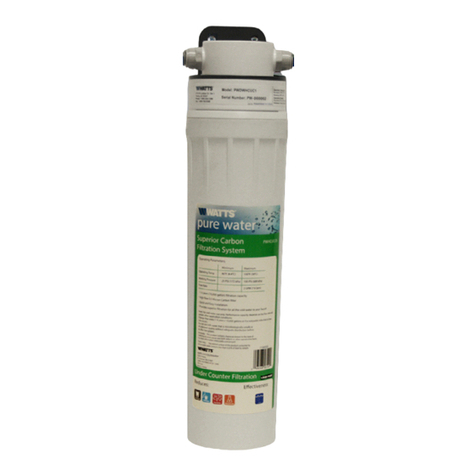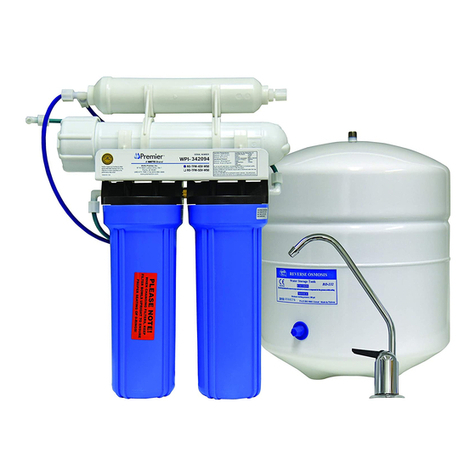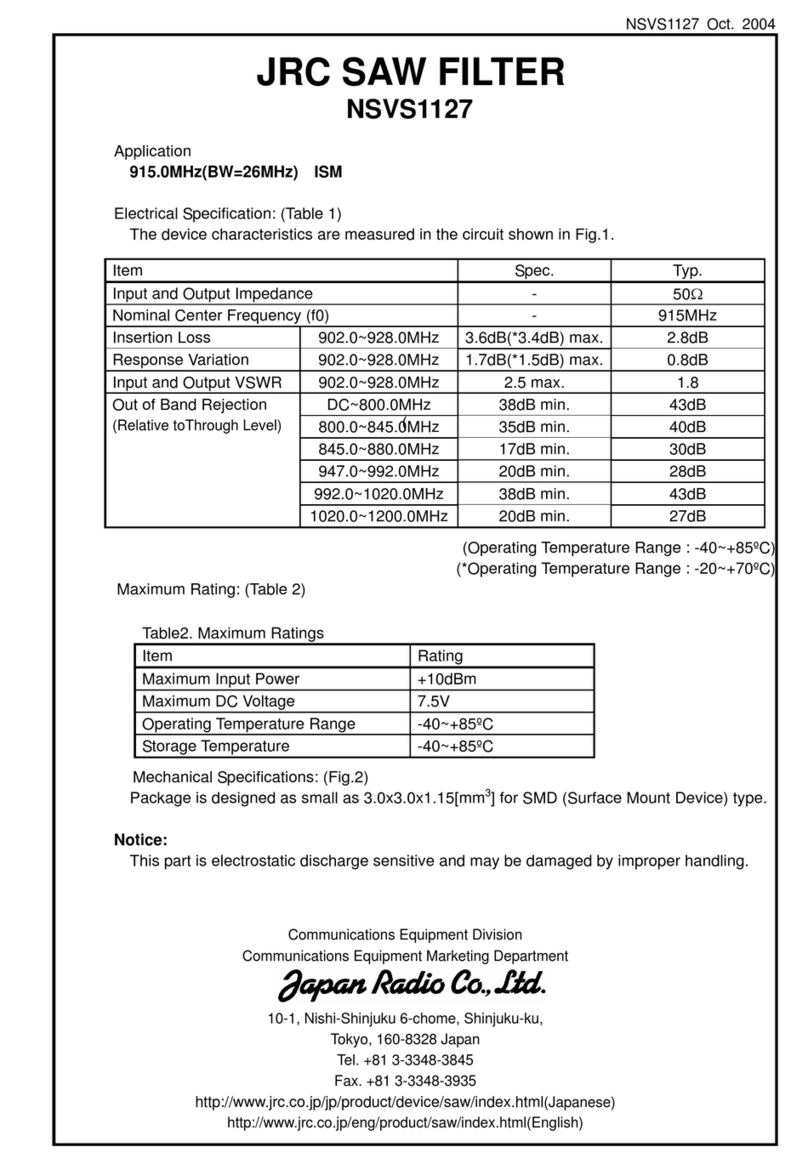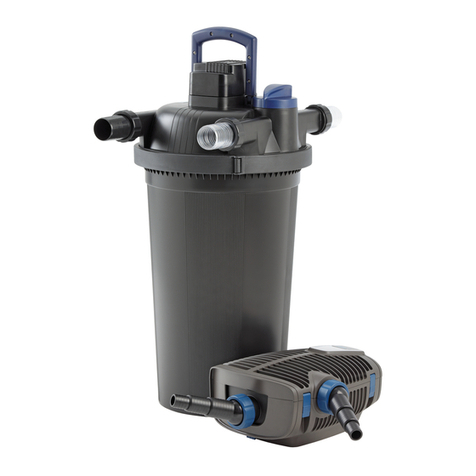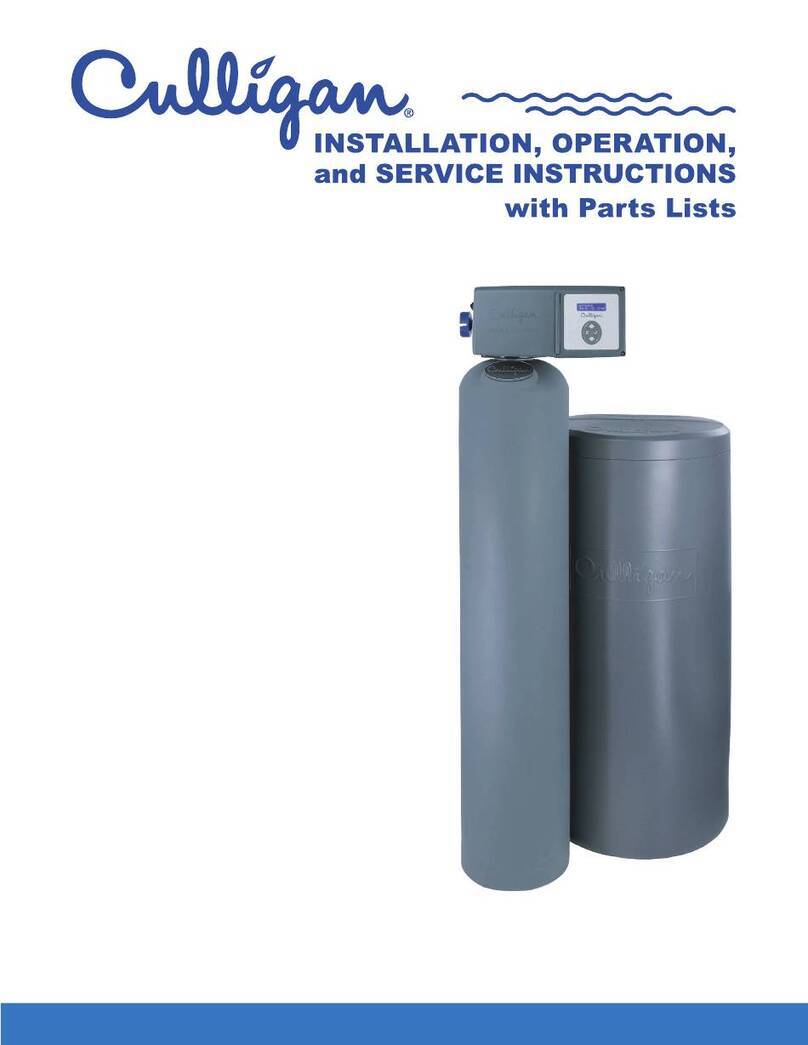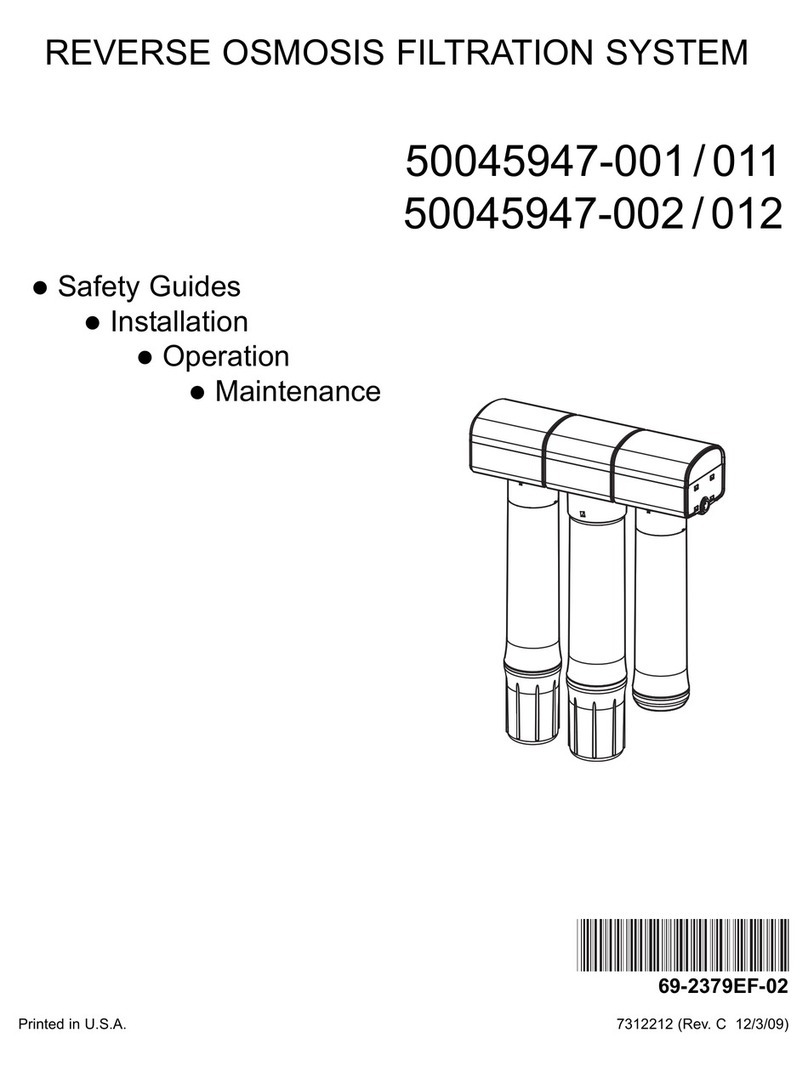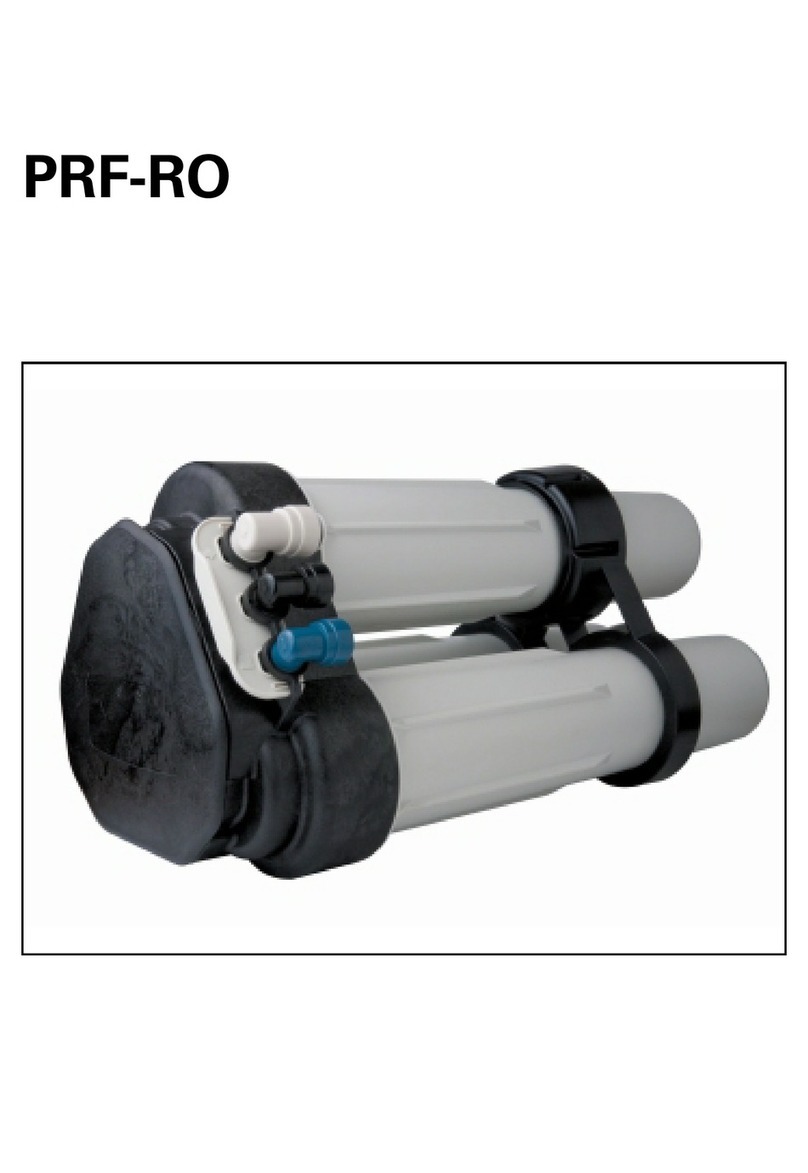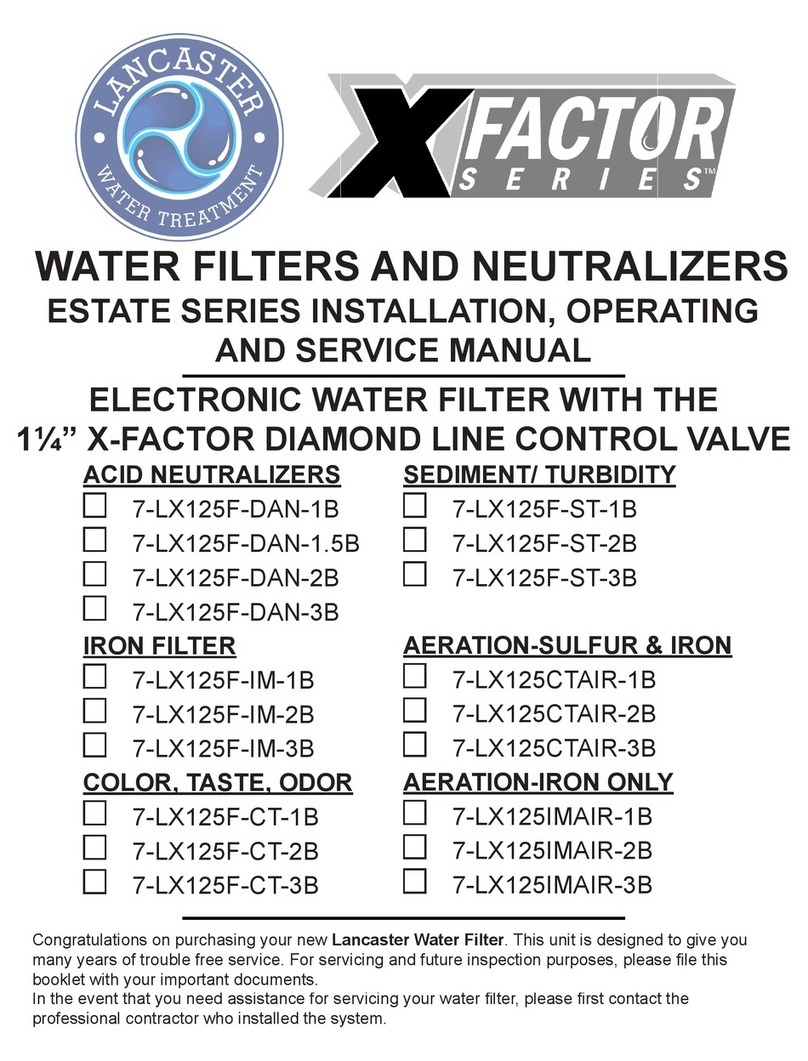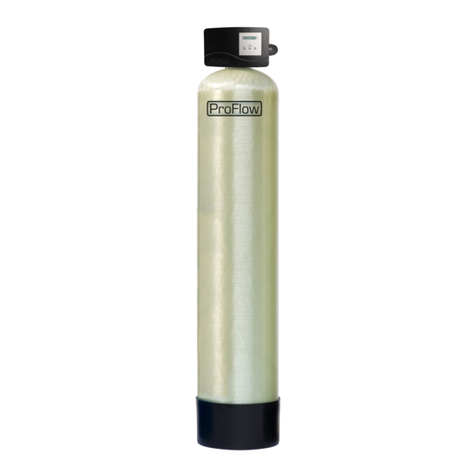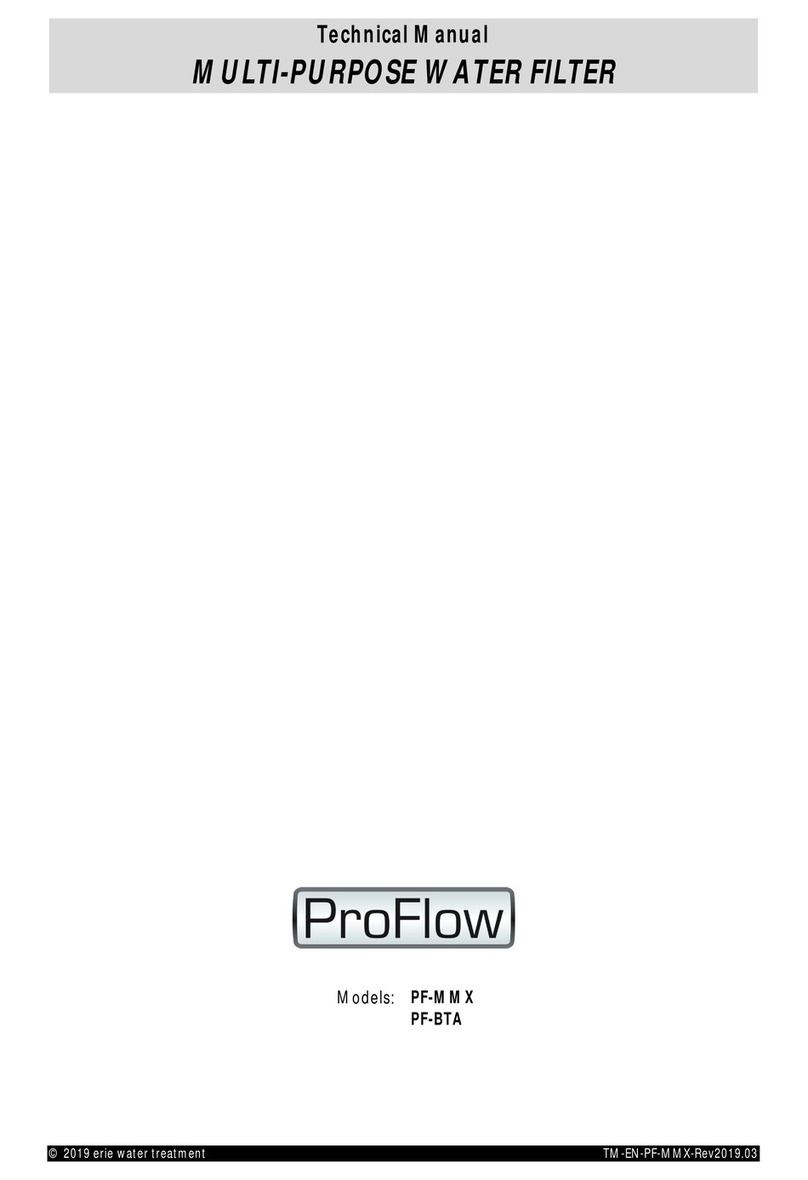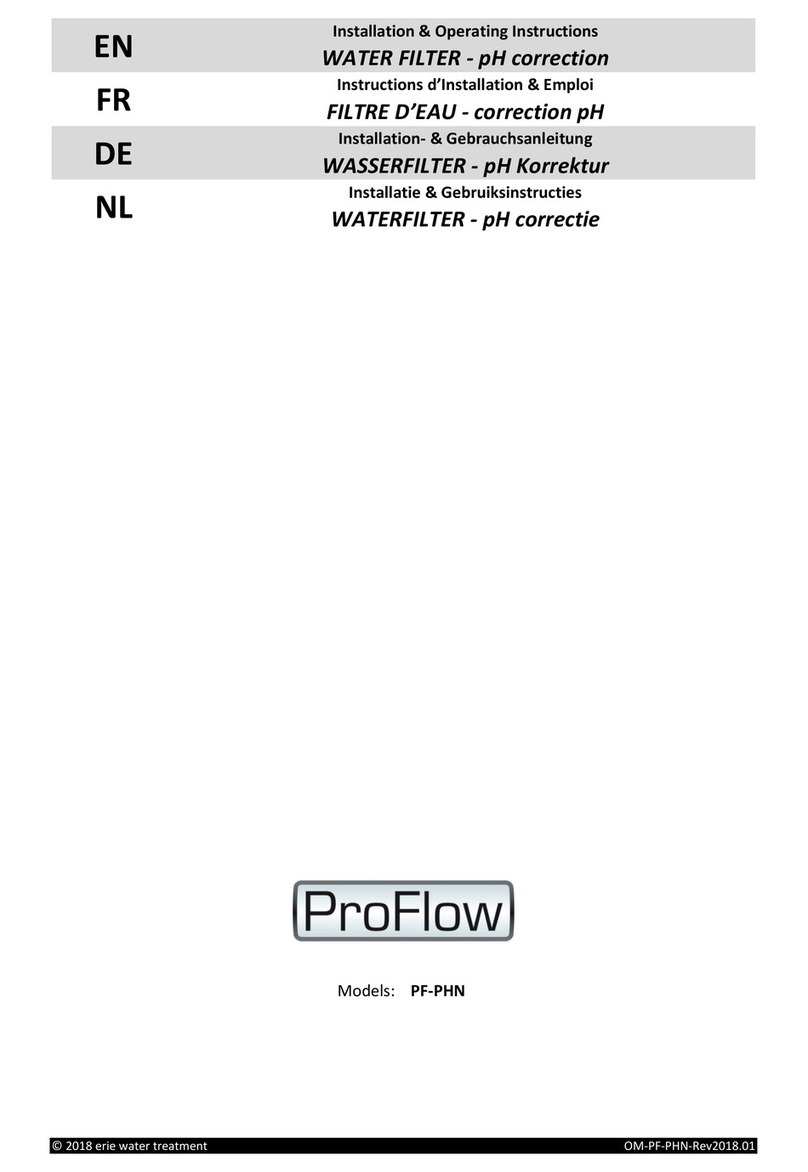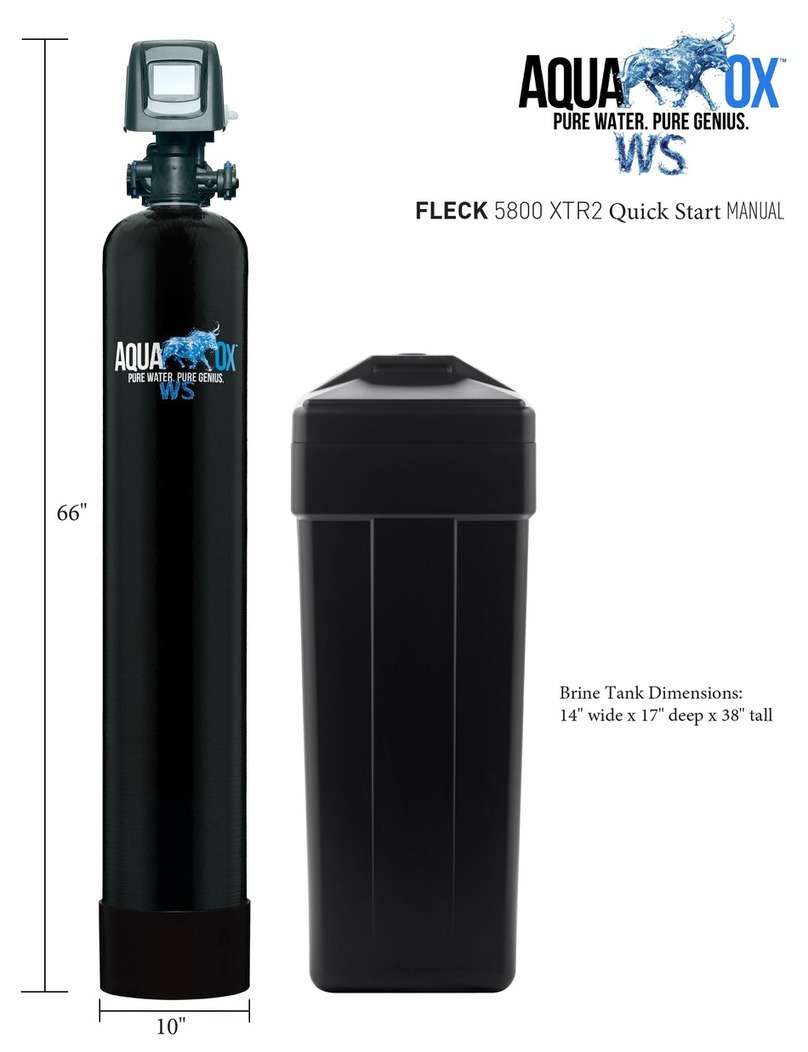ASSEMBLY
Page 5
CONTENT CHECK
Actualpartsthatyouhave received,may differ from the
pictures/illustrations in these Instructions!
For ease of transportation and installation, the filter
media mayNOTloaded in thepressure tank,butdeliveredin
separate bags of 1 cuft; it must be loaded on-site, after
positioning of the pressure tank.
Check the content of the system, using the Composition
Overview in these Instructions. Identify and lay-out the
different components to facilitate the assembly.
SIMPLEX
Picture 1.a, 2.a, 3.a
A Simplex system consists of 1 single filter module (pressure
tank, filter media, control valve).
Duringnormaloperation,the system deliverstreatedwater.
As soon as it initiates a regeneration, it automatically goes
into bypass, guaranteeing uninterrupted supply of untreated
water.
It ispossibletoinstall aso calledNormallyOpenServiceValve
(e.g.asolenoidoperateddiaphragmvalve)intheoutletofthe
system, that is controlled by the electronic timer of the
system; this Service Valve will be activated during the entire
duration of the regeneration, to close-off the control valve's
standard 'untreated water bypass during regeneration'.
MULTIPLEX PARALLEL
Picture 4
A Multiplex PARALLEL system consists of 2 or more Simplex
systems, that:
-are hydraulically installedin parallel;
-are programmed for different times of regeneration;
-may have aso called Normally Open Service Valve (e.g. a
solenoid operated diaphragm valve) in the outlet of each
Simplex system, that is controlled by the electronic timer
of each Simplex system; this Service Valve will be
activated during the entire duration of the regeneration,
to close-off thecontrolvalve's standard 'untreated water
bypass during regeneration'.
During normal operation, all Simplex systemsare in service,
doubling/tripling/… the service flowrate!
In case of a power failure, all Service Valves will be
deactivated, meaningtheoutlet of all Simplexsystemswill be
open, guaranteeing uninterrupted supply of water.
FILTER MEDIA LOADING
1. Move the pressure tank to the correct installation
location; position it on a flat and level surface. Make sure
to leave enough space for ease of service.
2. Position the riser assembly upright and centred in the
pressure tank; plug the top of the riser tube with a piece
of tapeor cleanrag, toprevent filter mediafrom entering
the tube.
3. Place a funnel on the pressure tank opening and fill the
pressure tank with filter media; make sure the riser
assembly remains centered in the pressure tank.
4. Rinse the pressure tank opening to remove any grains of
filter media from the threaded section.
5. Unplug the top of the riser tube.
CONTROL VALVE
only for PF-GAC1 & PF-AG1
1. Make sure the O-ring in the riser insert and the tank O-
ring(aroundthethreadedsectionofthecontrolvalve)are
in the correct position.
2. Screw the top distributor onto the control valve.
3. Lubricate the threaded section of the pressure tank, the
top of the riser tube and the tank O-ring of the control
valve; use a silicon-based lubricant.
4. Lowerthecontrolvalvestraightdownontotherisertube,
until the riser tube is correctly inserted in the riser insert;
then push it down firmly and screw it onto the pressure
tank.
only for PF-GAC1,5 & PF-AG1,5
Picture 5
1. On the brass valve seat:
makesuretheO-ringintheriserinsertisinthecorrect
position;
install the top distributor and fix it by means of the 2
stainless steel screws;
install the tank O-ring in the groove on the flange
around the threaded section.
2. Lubricate the threaded section of the pressure tank, the
top ofthe risertube andthe tank O-ring of thevalve seat;
use a silicon-based lubricant.
3. Lower the valve seat straight down onto the riser tube,
until the riser tube is correctly inserted in the riser insert
inside the valve seat; then push it downfirmly and screw
it onto the pressure tank.
4. Install the valve seat O-ring in the groove on the valve
seat.
5. Install the control valve onto the valve seat; mind the
alignment pin!
5. Bolt the control valve tothe valveseat by means of the 4
stainless steel bolts; tighten firmly.




















